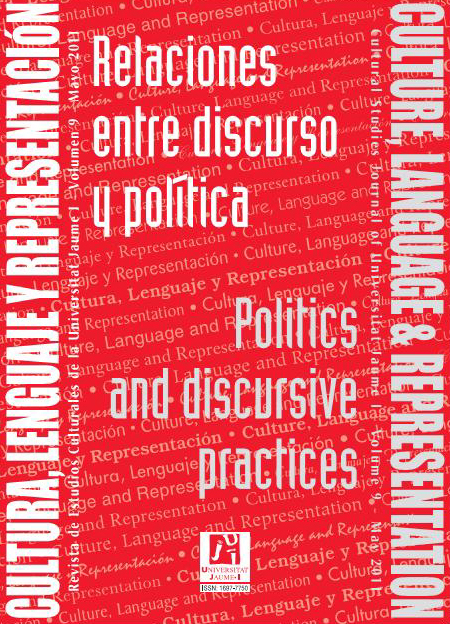El franquismo a la luz de sus metáforas
Main Article Content
Abstract
Este artículo tiene por objeto el análisis de los discursos del General Francisco Franco, cuyo mandato se extiende desde 1939 hasta su muerte en 1975. Es un período que podría clasificarse en tres fases. La primera etapa se caracteriza por la utilización del concepto hispanidad desde el sentido de resistencia y sacrificio cristiano (cuyo tópico característico es el de la hora difícil). Estos discursos recuperan con mayor fidelidad la memoria discursiva que plantea y construye el ideal joseantoniano de Falange Tradicionalista. Otro rasgo es la construcción que se realiza de Estados Unidos en tanto enemigo por no poseer un sistema económico autárquico mientras que la caracterización del Movimiento se presenta discursivamente como Régimen. La segunda etapa construye la hispanidad mediante el campo semántico de la producción económica. El hogar cristiano y abnegado será un hogar capaz de producir y multiplicarse. Se abandona la denominación régimen por monarquía. La última etapa se construye mediante la equivalencia semántica hispanidad/grandeza y verdad históricas. Con la loe los discursos intentan construir una nueva legalidad, distinta a las bases iniciadas por los ilustrados y la constitución de Cádiz.
Downloads
Article Details
An open-access CREATIVE COMMONS copyright license is used. Those authors whose works are published by this journal, accept the following terms:
- Authors will retain their copyright and guarantee the Journal the right to first publish their work, which will simultaneously be subject to the Creative Commons Recognition License CC BY SA that allows third parties to share the work, provided that its author and first publication is indicated.
- Authors may adopt other non-exclusive license agreements for the distribution of the published version of the work (e.g., deposit it in an institutional telematics file or publish it in a monographic volume) provided that the initial publication in this journal is indicated.
- Authors are allowed and recommended to disseminate their work over the Internet (e.g. in institutional telematics files or on their website) before and during the submission process, which can produce interesting exchanges and increase quotes of the published work.


